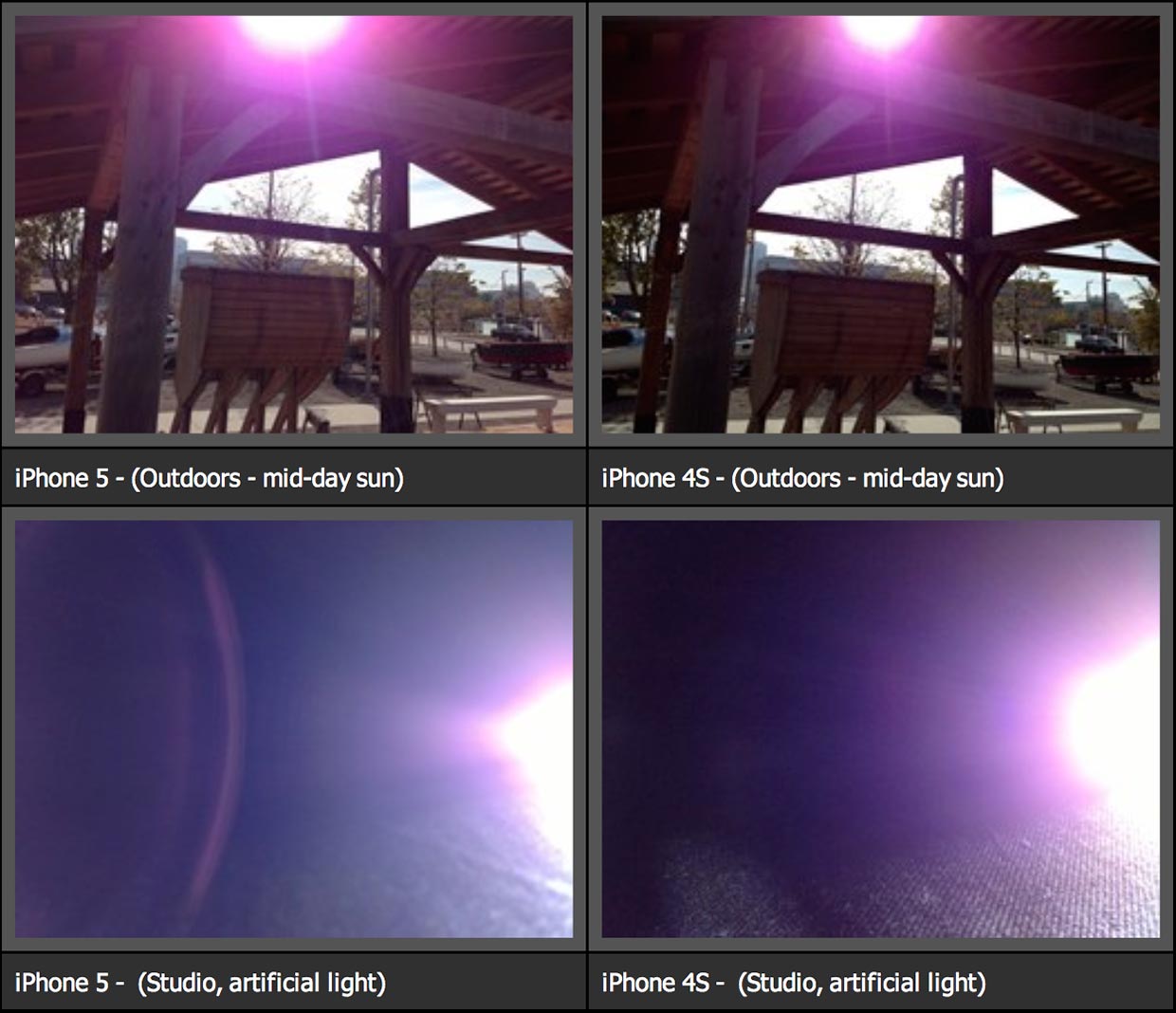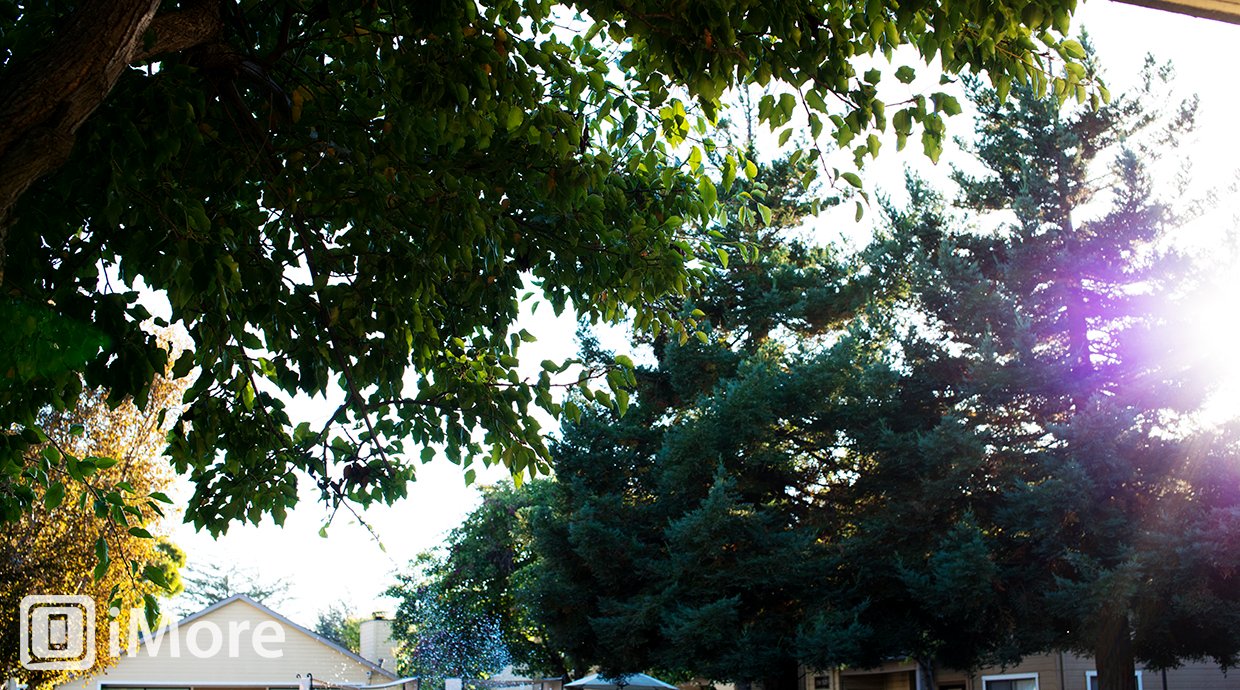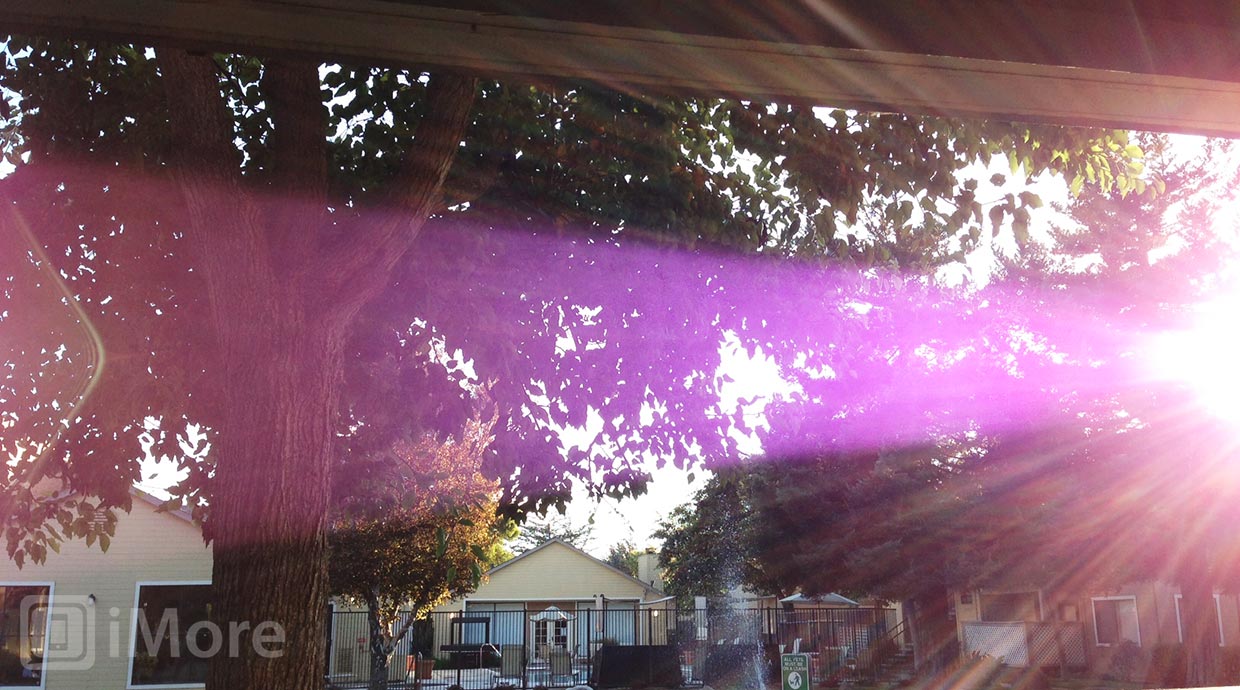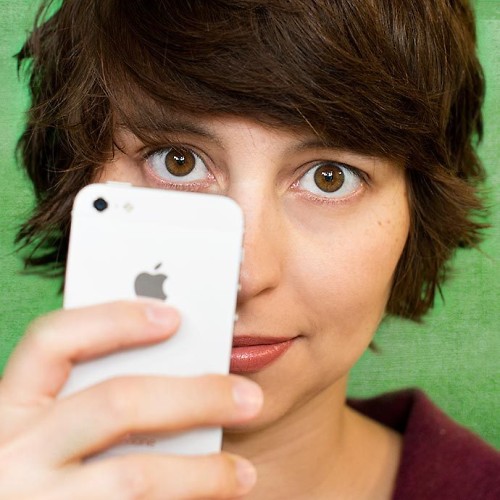iPhone 5, photography, purple fringing, and what you need to know

Not long after the iPhone 5 was released, reports of a purple flare produced by the camera started sprouting up all over the internet. Matthew Panzarino from The Next Web quickly responded to these outcries of "purplegate" by explaining that this flaw wasn't unique to the iPhone 5, but is present on the iPhone 4S and can even occur when using high-end DSLR cameras and lens. This weekend, Apple issued a support article claiming that this symptom is normal for small digital cameras and explained how to reduce the likelihood of it occurring.

If this purple haze is so normal, then what exactly is it? As Panzarino pointed out, it's a chromatic aberration called "purple fringing". The above photo is his example of both the iPhone 4S and iPhone 5 producing purple flare.
[Purple fringing] can be related to a variety of things including stray infrared light, stray UV light, anti-reflective lens coatings, image processing or bloom from overexposure. These effects are exacerbated in very bright light and with lens flare.

The photography experts over at Digital Photography Review reached a similar conclusion as demonstrated in the image above.
The most likely cause of the iPhone 5's purple haze is probably lens flare and internal reflections in the camera lens assembly. All lenses are succeptable to lens flare to some degree, and as you can see from the images at the top of this page, the iPhone 4S isn't immune either (ditto the iPhone 4 and competitive smartphones from other manufacturers).
When I first heard about purple fringing with the iPhone 5, I was a little bothered because I had never experienced it with my iPhone 4S. Except it turns out that I did experience it, I just never noticed because I wasn't looking for it. I found these two photos I took on my iPhone 4S, last year.

I also decided to see if I my Nikon D800 and Sigma 50mm f/1.4 lens were susceptible to purple fringing. With very little effort, I got this photo.

So once again, all this hype over "purplegate" has been blown way out of proportion. As it turns out, Apple was actually being modest when they said that "most small cameras" may exhibit this flare as even very expensive digital cameras are susceptible to the flaw.
So how do you avoid it? First and foremost, avoid pointing the camera towards a bright light source to eliminate flare altogether. You can also use your hand to shield the source from directly hitting your lens. Professional cameras actually come with lens hoods that work similar to using your hand, because, again, all cameras will produce flare. Some iPhone cases may also work as a small lens hood since they create a ridge all the way around the lens. If you want lens flare, just not purple flare, try altering the angle at which the light hits the lens.
iMore offers spot-on advice and guidance from our team of experts, with decades of Apple device experience to lean on. Learn more with iMore!
Or, if you're like me, embrace the purple flare and create photos that make it look like there's an alien invasion.

Former app and photography editor at iMore, Leanna has since moved on to other endeavors. Mother, wife, mathamagician, even though she no longer writes for iMore you can still follow her on Twitter @llofte.

